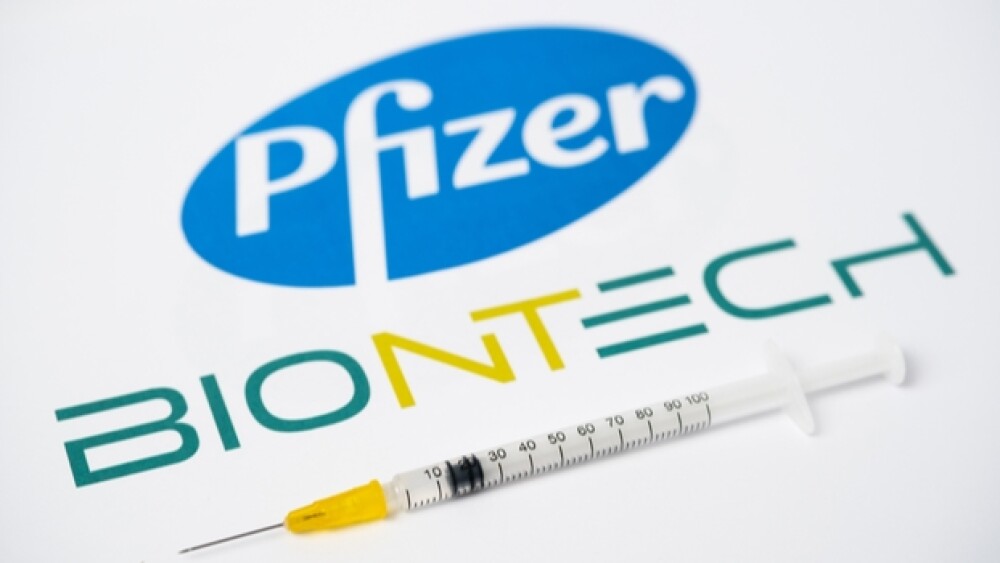On Feb. 15, the FDA’s Vaccines and Related Biological Products Advisory Committee is scheduled to discuss an amended EUA for the Pfizer-BioNTech vaccine in the under 5 age group.
Ascannio/Shutterstock
On Feb. 15, the U.S. Food and Drug Administration‘s Vaccines and Related Biological Products Advisory Committee is scheduled to discuss an amended Emergency Use Authorization for the Pfizer-BioNTech COVID-19 vaccine for children 6 months up to 5 years of age. The agency is likely to release an assessment of the application today, which gives the advisory committee time to review it ahead of the meeting thoroughly.
Unexpectedly, the FDA requested the companies initiate a rolling submission for the EUA, which they then submitted on Feb. 2. The vaccine has been fully approved for a two-dose regimen in adults and a third-dose booster in people 12 years and older. It has an existing EUA in children 5 and older.
One puzzle was that, at the time, Pfizer was still collecting data on the third dose in the 6-month to 5-year age group, with inconsistent results over the two-dose regimen. In late Dec. 2021, Pfizer reported that two child-sized doses of the vaccine did not provide as robust immune response in the 2- to 5-year-olds as desired but did in children 6 months to 2 years of age. They indicated they would evaluate the third injection eight weeks after the second.
It’s not clear why the discrepancy, although children’s immune systems are not as mature as adults. The companies have declined to speculate.
This discrepancy has caused some health experts to urge the FDA to delay authorization until results of a third booster dose are completed. Reportedly, Pfizer and BioNTech had planned to wait for that data before submitting an EUA request, but the FDA encouraged the rolling submission.
If the advisory committee recommends authorization and the FDA and CDC agree, the shots could become available by the end of February or early March at schools, pediatrician offices and other locations. The dose for the younger group is one-tenth of that given to older children and adults. The CDC has informed local health officials they could potentially receive their first doses by Feb. 21. To date, no safety concerns have been observed.
Pfizer’s chief executive officer Albert Bourla told CNBC earlier this week that he believes the FDA will authorize the vaccine for this age group under a fast-track process. “I think the chances are very high for FDA to approve it,” he said. “I think that they will be pleased with the data and they will approve.”
Another factor the advisory committee will likely consider is whether this age group really needs a COVID-19 vaccine. Although children of all ages can potentially catch COVID-19, children in general only represent about 18% of all COVID-19 cases in the U.S., according to the Mayo Clinic. Granted, that is 5.6 million cases since early September 2021. However, they are much less likely to become severely ill. Approximately half of children and adolescents who are diagnosed with COVID-19 are asymptomatic. Newborns, however, may be at higher risk of severe disease than older children. There is also a risk of multisystem inflammatory syndrome (MIS-C), a higher risk in children with COVID-19.
Earlier in the pandemic, children seemed largely unaffected by the disease, but the rise of the Delta and Omicron variants, which are more infectious than previous strains, affected children more often—probably because the disease was more widespread in the population. A survey by the Kaiser Family Foundation found that only about 31% of parents of children under 5 years of age said they would get their kids vaccinated right away, 12% said they only would if it was required, and 29% they’d wait. Of them, 26% said they would not get their children vaccinated.
Dr. Betsy Herold, a pediatric infectious disease physician at the Albert Einstein College of Medicine, told Vox, “The risk in children has not changed with the new variant as far as we can tell.” She estimates that less than 2% of children infected are hospitalized and less than 0.3% of those infected dies. Although the data is lacking, Long COVID appears to be very low in children.
There are about 19 million children in the U.S. under 5 years of age.
Featured Jobs on BioSpace





